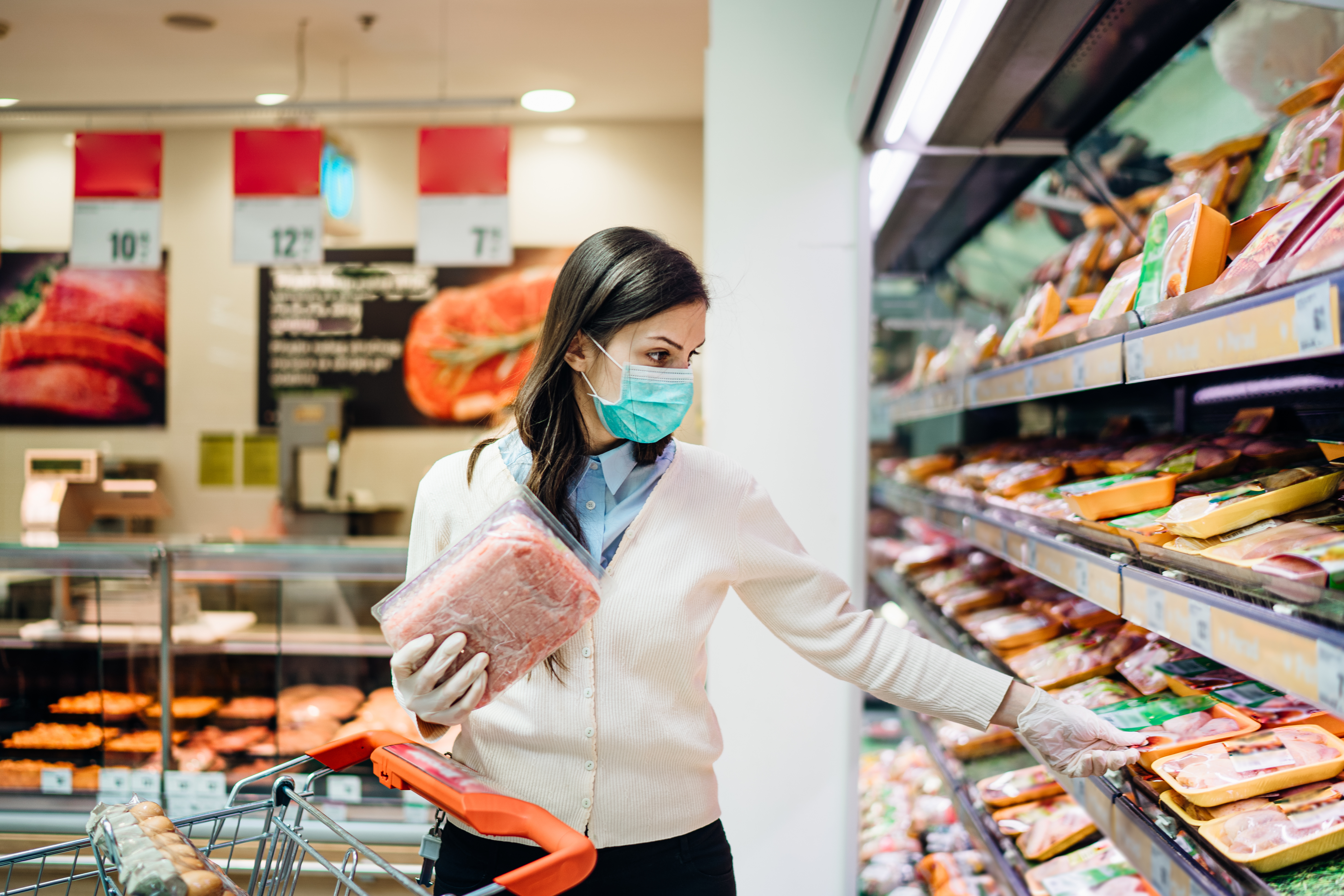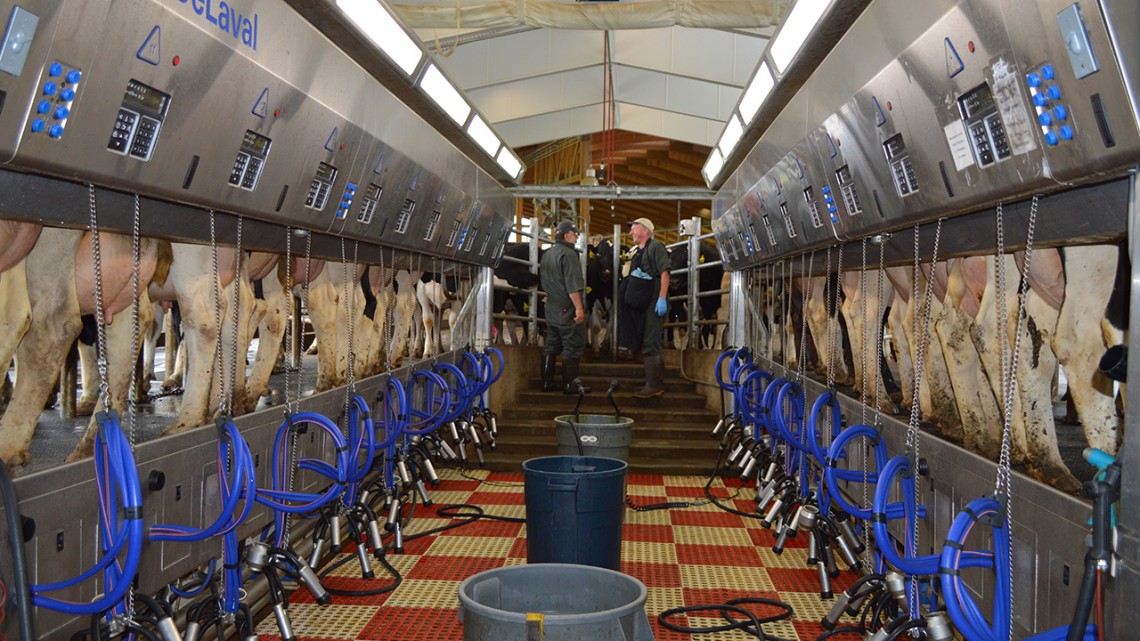



Weekly beef and dairy digest: CEOs warn of food inflation as crop prices rise
As the US embarks on its economic recovery from COVID-19, food companies warn that skyrocketing grain prices could inflate food prices for consumers.US economic recovery is broadening, suggesting better meat demand
US consumers used stimulus checks to boost retail spending in January to its largest increase in seven months, a significant jump that comes as manufacturers continued to increase output and employers resumed hiring. Retail sales jumped a seasonally adjusted 5.3% in January from a month earlier, and manufacturing output neared pre-pandemic levels.

Consumer spending is the main driver of the US economy, accounting for more than two-thirds of economic output. Improvements continued to be seen compared with year-ago marks for building materials and garden equipment stores and food and beverage stores versus year-ago levels, while clothing retailers saw improved activity compared with December. Consumer demand for meat should continue to improve in the coming months, but food service and drinking places, while up from December, continue to struggle with Covid-19 impacts.
Meantime, the Federal Reserve Bank of Atlanta’s GDPNow model on Wednesday 17 February predicted the US economy will grow at a 9.5% seasonally adjusted annual rate in the first quarter, up sharply from a 4.5% estimate a week ago. Minutes from the Fed’s January policy meeting separately showed that policy makers expected the end-of-year federal stimulus package and progress toward widespread vaccinations to improve the outlook for the economy.
Brutal cold in central US impacting livestock marketing, health
US livestock processing demand will be reduced this week and possibly next week due to a number of meat plants in the central US having to reduce processing or close altogether due to the Arctic blast and related natural gas shortages. Also, livestock producers are seeing their animals stressed, including reduced weight gains, as well as having more difficulty transporting animals to market.

US food companies warn they may pass rising commodity prices on to consumers
Food companies Kraft Heinz Co. and Conagro Brands warned they may need to raise food prices this year to account for commodity price inflation. “Where we are seeing [inflation] is in grains and everything related to grains ... It's across the board. Sugar has big inflation; mac & cheese because it has wheat; mayo because it has oil; salad dressing because it has oil; all sweet products like desserts,” Kraft Heinz Chief Executive Miguel Patricio told Reuters in an interview. Conagra CEO Sean Connoly commented that ingredient and packaging costs account for between 60% and 65% of the company’s total cost basket and so far, food companies have been forced to absorb higher costs.
On average, US consumers paid 3.7% more for food consumed at home in January than they did the year prior, according to the Bureau of Labour Statistics. Other major food companies like Lipton tea and Unilever (the maker of Hellman’s mayonnaise) also signalled higher prices are likely ahead.
US retail dairy report for latest week
During the period of 12 February to 18 February, total US conventional dairy ads decreased by 15%, while organic dairy ads increased by 26%. The most advertised dairy item this week is conventional 48 to 64-ounce containers of ice cream. The national weighted average price is $2.98, down 1 cent from last week. The national weighted average advertised price for conventional 1-pound butter is $3.23, 19 cents higher than last week.
The second most advertised dairy item, conventional 8-ounce shred cheese, has an average price of $2.56, up 14 cents from last week. Conventional 8-ounce block cheese has an average price of $2.62, up 19 cents from last week. Organic 8-ounce block cheese has an average price of $3.69, unchanged from last week.

Conventional cheese ads increased 13% and organic cheese ads were unchanged from the week before. The national weighted average advertised price for conventional Greek yogurt in 32-ounce containers is $4.35, down 23 cents from last week. Organic 32-ounce containers of Greek yogurt have a national weighted average advertised price of $6.99. Conventional yogurt ads decreased 27%, but organic yogurt ads increased 21%.
Conventional milk ads increased by 13% while organic milk ads increased by 49%. The national weighted average advertised price for conventional half gallon milk is $1.40, down 68 cents from last week. The national weighted average advertised price for organic half gallons is $3.79, down 15 cents from last week. Organic half gallon milk was the most advertised organic dairy item, followed by organic gallon milk.
USDA’s February dairy supply and demand report
The 2020 milk production, trade, and stock estimates are adjusted to reflect December data. For 2021, the milk production forecast is raised from last month, primarily on higher dairy cow numbers. The 2021 fat basis import forecast is raised on higher expected imports of cheese and butterfat products, while exports are raised on higher shipments of butterfat. On a skim-solids basis, the import forecast is unchanged while the export forecast is raised, reflecting expectations of strong international demand.

Annual product price forecasts for cheese and butter are lowered from the previous month on current prices, increased production, and larger stocks. Non-fat dry milk (NDM) and whey price forecasts are raised from last month on firm demand. The Class III price is reduced on the lower cheese price forecast and the Class IV price is also reduced, reflecting a lower butter price forecast. The 2021 all milk price forecast is reduced to $17.15 per cwt.
January Consumer Price Index (BLS)
The Consumer Price Index (CPI) for the all food category is 270.9, up 3.8% from 2020. The dairy products index is 231.5, up 3.8% from a year ago. The following are the January 2020 to January 2021 changes for selected products: fresh whole milk is +4.7%; cheese, +4.5%; and butter, -2.6%.
Read Jim Wyckoff's updates on the global swine industry on The Pig Site and see his analysis of the poultry industry on The Poultry Site.
TheCattleSite News Desk
IMPORTANT NOTE: I am not a futures broker and do not manage any trading accounts other than my own personal account. It is my goal to point out to you potential trading opportunities. However, it is up to you to: (1) decide when and if you want to initiate any traders and (2) determine the size of any trades you may initiate. Any trades I discuss are hypothetical in nature.
Here is what the Commodity Futures Trading Commission (CFTC) has said about futures trading (and I agree 100%): 1. Trading commodity futures and options is not for everyone. IT IS A VOLATILE, COMPLEX AND RISKY BUSINESS. Before you invest any money in futures or options contracts, you should consider your financial experience, goals and financial resources, and know how much you can afford to lose above and beyond your initial payment to a broker. You should understand commodity futures and options contracts and your obligations in entering into those contracts. You should understand your exposure to risk and other aspects of trading by thoroughly reviewing the risk disclosure documents your broker is required to give you.



